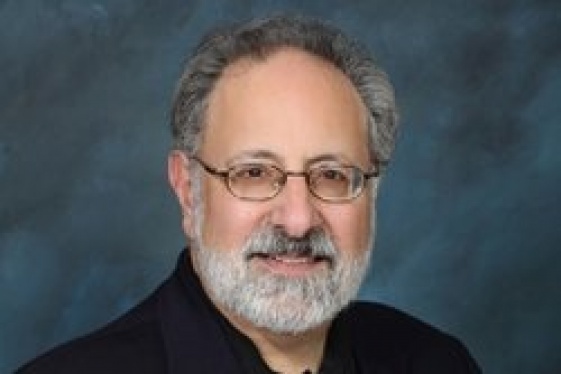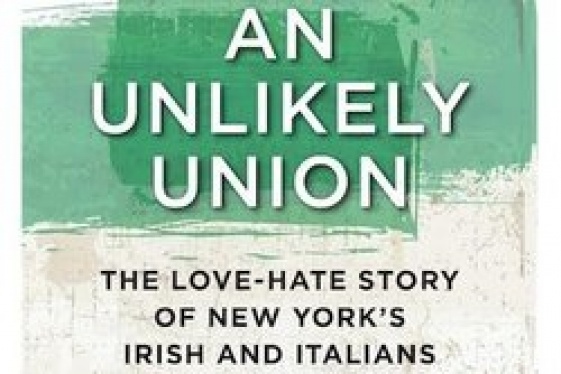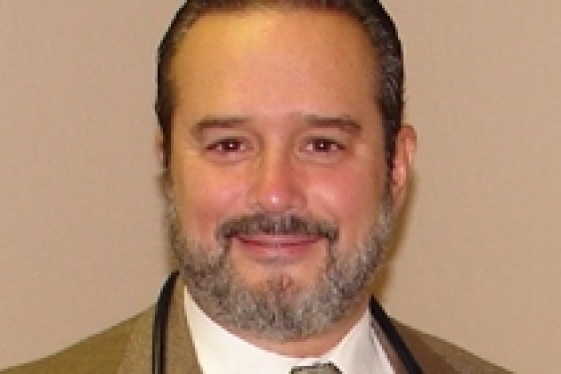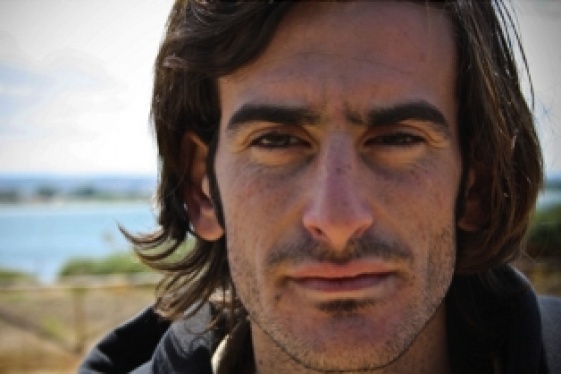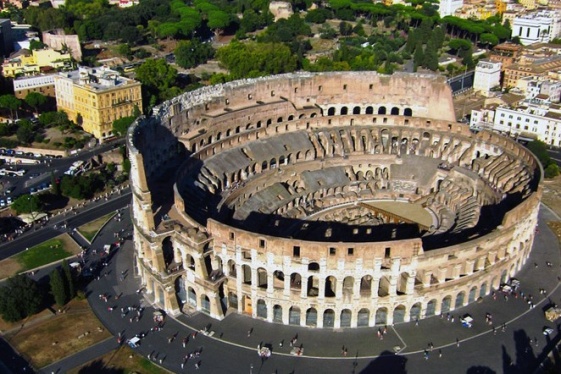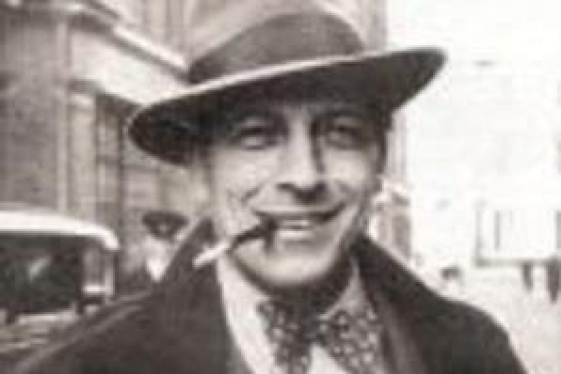
Maria Teresa Cometto (Creator of Make in Italy exhibition)
L'innovazione italiana a New York, a Roma e nel mondo: Make in Italy

The love for Made in Italy often comes from the admiration for the many wonderful things done in the past by the Italians. That's fine, but let's not forget the great things that nowadays Italy does in the world of innovation: and there are very good stories to be told.
This time we want to talk about Italian Innovation not with a Silicon Valley hero in, but with a "Silicon Alley" expert: this is how you define the start-up movement active in Manhattan and the surrounding areas. Maria Teresa Cometto is an excellent Italian journalist who lives in New York, and is now the point of reference for those who want to know more about the world of innovative start-ups in the Big Apple. She has created, together with Riccardo Luna, a wonderful exhibition called "Make in Italy": a hit already seen by ninety thousand visitors, at its opening within the great Maker Faire in Rome.
Maria Teresa, you live in New York, a city where the world of innovation and startup is in great effervescence, as you described in the book that you wrote with Alessandro Piol, "Tech and the City." Tell us more about the "Silicon Alley"?
I had the idea of writing "Tech and the City" talking with Alessandro Piol, a venture capitalist who has been working in New York for over thirty years and is the son of Elserino Piol, the father of Italian venture capital, funder of Tiscali, successful start-up like Yoox and many other new Italian companies. Speaking with Alessandro we thought that few - even in New York - knew the reality of the tech start-ups in the City, which has tremendously grown, especially from 2008 onwards, even if this reality began to develop during the first Internet boom in the early 2000s.
It is a particularly interesting reality for Italy, and this is one of the reasons why we made the book: to help Italy reasoning about how to be innovative starting from industries operating in sectors other than new, because this is one of the peculiarities of technology in New York. Here innovation is grafted on traditional industries in the city: finance, advertising, publishing, fashion. These are all industries that have made great New York in the recent decades, and now have been revolutionized thanks to new technologies.
The book begins from the mid-90s, and shows how the technology industry has developed through or thanks to the crisis, which from time to time forced the city to rethink and to reinvent itself. The first crisis was obviously due to the Internet bubble in 2000, and after 2000 there were not only rubble and burned billion on the stock market, but also a change of heart and the birth of new ideas, combined with the fact that shortly after 2000 the tragic collapse of the Twin Towers on Nine Eleven physically and psychologically devastated the city.
In 2006 began the second stage of technology start-ups in New York, because with the arrival of Google in Manhattan, in particular in Chelsea, an entire new sector was created, a magnet for engineers, software developers and other professionals.
Today we have the second and sometimes third generation of start-ups in New York, because some innovative entrepreneurs do not stop when they are successful: they don't retire, they reinvest the fruits of their work in new businesses, new ideas, continuing to grow this ecosystem.
You are now a point of reference for the world of startups, venture capital and Innovation Technology in New York. How is innovating Italy, view from there? Are there any who already landed there?
Unfortunately, New York has seen very little innovating Italy. From the New York perspective, perhaps the most famous Italian innovator is Marchionne. The owners of smaller business, unfortunately, are not known yet: although I must say that in September, at the Maker Faire in New York, I loved to see a small organized group of Italian makers, many of whom Emilia Romagna, that is a very fertile land of entrepreneurs in precision engineering sector. This is not something known to the American public, but Italian machine tools are the best, actually all Italian precision machines: it is the most important export sector from Italy to America, more than fashion, food and wine. So I would say that Italy could do much more to raise awareness of its excellence, as well as about its innovators, in this area.
Ok, we need to do better. But what if I ask you about at least a name an Italian who arrived in New York and is conquering the market and gaining visibility?
The first name I can give you is Alberto Pepe, who I recently met. Alberto studied at Harvard, he is an astrophysicist and he invented Authorea, a platform that allows scientists to collaborate online in the writing of papers, and also allows the scientific community to comment, discuss, criticize and improve these documents. This is a wonderful project and I know that it is having a lot of success in the universities.
As mentioned, in New York we have not so many Italian entrepreneurs as in Silicon Valley. Another one is Silvia Bosio, a girl from Turin who invented W-lamp, a company specializing in contemporary lighting, based in Brooklyn.
Innovation in Italy: due to the genius in our DNA, but also by the many obstacles that create the need to develop our own creativity. Is there a field where we continue to be innovative, maybe even something that makes us admired and desired by the Americans?
The Americans always want Italy, 1000%! A guy who has a great success in America is Federico Marchetti, the founder of Yoox, a multinational company operating in America, Japan, and throughout Europe. He has done his MBA in New York, and he told me that it was certainly important to follow the MBA and learn how to make a business plan and other basic things, but above all it was the experience of New York that expanded his mind: back in Italy he had the right spirit to try to found a high-tech corporation, because its system of storage and selling online involves a set of highly innovative software and hardware. In fact, some have called Yook "the Amazon of fashion", and it's really great. Besides, at the beginning it was an Italian who created this software, a genius of the algorithm.
I was struck by the fact that two years ago the New Yorker, a very chic and sophisticated weekly magazine, dedicated ten pages to Federico Marchetti. I don't think that in Italy he has never had ten pages in a magazine, though as a very successful Italian, his history is absolutely to celebrate.
Science accelerates faster, with new business sectors that once did not even exist. If you were to give advice to our young Italians on where to direct their efforts and their new ideas, what areas would you point at?
I believe there isn't an area where we can no longer innovate. With the "Make in Italy" exhibition we are launching a competition in Italian high schools just to come up with new ideas and stimulate children's creativity. I think that it can be done, especially starting from the problems to be solved. Because the drive is always coming from someone's problem to be solved, then that is a problem common to many other people, and then you have somebody trying to invent a solution to this problem. That is the incentive to invent something or to innovate, in order to apply science. Therefore, the difficult moments are the most fruitful for innovation.
Perhaps we can say that to enter the world of innovation, of creativity, into the future ... you need a password which is given by courage, confidence, curiosity, determination and the willingness to work hard ... and that this password grant access to success and innovation, regardless of the field in which you specialize?
All of these things together, of course! The exhibition "Make in Italy" and the great success of the Rome Maker Faire prove it unequivocally. And these are Italian victories.
It always takes a great passion, and certainly dedication, in all fields. A character that really fascinated me is Nerio Alessandri, founder of Technogym. He started from the fact that he was a sportsman, he used to go to the gym in Cesena, Emilia Romagna, and he did not like the tools that were in those gyms because they were rudimentary: so he built one on his own, in his garage, as he liked. From there he began to sell it to the owner of his gym, then to a friend of the owner, and so on. Today he has been the official supplier of the last 5 Olympic Games and will also be in Rio de Janeiro 2016 and other major global teams in various sports ... and it all started from the garage of his house, without a degree, jnust with his passion, his skill and his stubbornness. He is a real craftsman! An excellent Italian craftsman.
It is therefore important that, thanks to wonderful initiatives such as the Rome Maker Faire, in Italy can grow a movement that is already born, to support and to be known everyday more and more. Because this creative spirit, which I have been able to verify as early as last year around Italy by presenting my book, can replace or at least change the media, the press, and the Italian culture in celebrating and publicizing these stories of inspiring successful models, thus creating a kind of trend, of fashion, pushing the young Italians to emulate them.
In the past, in this country there was room for movements of young people who had great passion, great energy, but pointed towards negativity, protest, and claim. Even today there is passion and energy, but these guys I see here, and I've been told that they are everywhere in Italy, connected by innovation, are positive, proactive, enthusiastic. It is a cultural shift that starts from the bottom, and if Italy wants to get out of the crisis cannot miss them.
Let's talk about "Make in Italy. 50 years of innovation Italian. From the Program 101 to the first 3D printed car", 20 stories to tell 50 years of innovation in Italy: the exhibition that you've created together with Riccardo Luna. I must say that I was very thrilled about it, and the same happened to the dozens of thousands who have visited it in just two days of Maker Faire. Can you please describe it to us? Please know that We the Italians will be happy to help, if you decide to bring it in America
This year New York is celebrating the fiftieth anniversary of the Universal Expo, which lasted from 1964 to 1965, and since then American companies that then submitted their new products are remembering them, in some cases re-proposing the current version ... I remembered that the P101, manufactured by Olivetti, was presented exactly 50 years ago in New York and it was welcomed with enthusiasm by the press. In our exhibition there are reproductions of newspapers of the time as the Wall Street Journal, the New York Times, Business Week, which define it "the first personal computer" because it was a machine that could do sophisticated calculations, which stood on a desk and could be used by any employee, rather than by technical experts from the traditional engine room. So, talking to Riccardo Luna, I thought that we had to celebrate it, be proud and let everyone know that we have a number of records.
We thought about everything done by the Italians in the past 50 years in the field of technology, and it's a lot! In addition to the P101, we talk about Federico Faggin, who made and signed the first microprocessor ever; we have the common rail diesel engine invented by FIAT, which is now adopted by all car manufacturers; there is the evolution of the accelerometer which is now in virtually every device we have in our pocket, created by Benedetto Vigna; there is a humanoid robot made by the Institute of Technology in Genoa; there is a cybernetic hand made by the Scuola Superiore Sant'Anna of Pisa; there are so many other great Italian innovators, and last but absolutely not least, Massimo Banzi, who with Arduino is the hero of the makers from all around the world.
The idea of the exhibition is to remember all this, but with the aim of inspiring the future. We're pretty tired of the speech for which the Italians are good, talented, but unlucky, because everybody always remember the sad story of Meucci who invented the telephone, but then he was robbed of his rights. We must learn from the failures of the past, because if there's one thing that America teaches is that failures are used to learn what went wrong: we have so many success stories going on to this day. So we celebrate these 50 years in order to inspire the future, and to say that Italy has a great future because we have these brains, these strengths, these great guys. So, either in research laboratories or individual craftsmen, either in big or small companies, we the Italians have a lot of examples to inspire new generations with these stories.
Where will we be able to find the exhibition in the future?
The exhibition will go all around Italy. Definitely we will bring it to Expo 2015. We still do not have defined the other stages, but definitely it will travel, also thanks to the competition in high schools I told you about: we will ask the Italian students to present the new P101 idea, the new computer, the new revolutionary project, and the best ideas will be manufactured in Fablabs, the laboratories of the makers, and then will be presented at the 2015 Maker Faire in Rome. The best will also receive a scholarship.
The dream is to bring the exhibition to Manhattan next year, coinciding exactly with the launch of the P101 in New York. So surely We the italians can help us to prepare the ground and to organize the exhibition there on the spot. We already have ISSNAF, the association of Italian scientists in America, which is working on something. I think it will be a good time to let New York see and learn that this is Italy, too.
You may be interested
-
'Phantom Limb': A Conversation With Dennis...
Dennis Palumbo is a thriller writer and psychotherapist in private practice. He's the auth...
-
An Unlikely Union: The love-hate story of Ne...
Award-winning author and Brooklynite Paul Moses is back with a historic yet dazzling sto...
-
Arnaldo Trabucco, celebrated medical practit...
Arnaldo Trabucco, MD, FACS is a leading urologist who received his medical training at ins...
-
Cathedral of St. John the Divine, Oratorio S...
For the first time ever, The Cathedral of St. John the Divine, in collaboration with the O...
-
Davide Gambino è il miglior "Young Italian F...
Si intitola Pietra Pesante, ed è il miglior giovane documentario italiano, a detta della N...
-
Exciting Palatine. Interview with Clementina...
You can tell she fills with excitement when she has the chance to show an important archae...
-
Former Montclair resident turns recipes into...
Former Montclair resident Linda Carman watched her father's dream roll off the presses thi...
-
Garibaldi-Meucci Museum to Celebrate Ezio Pi...
On Sunday, November 17 at 2 p.m., Nick Dowen will present an hour-long program on the life...







